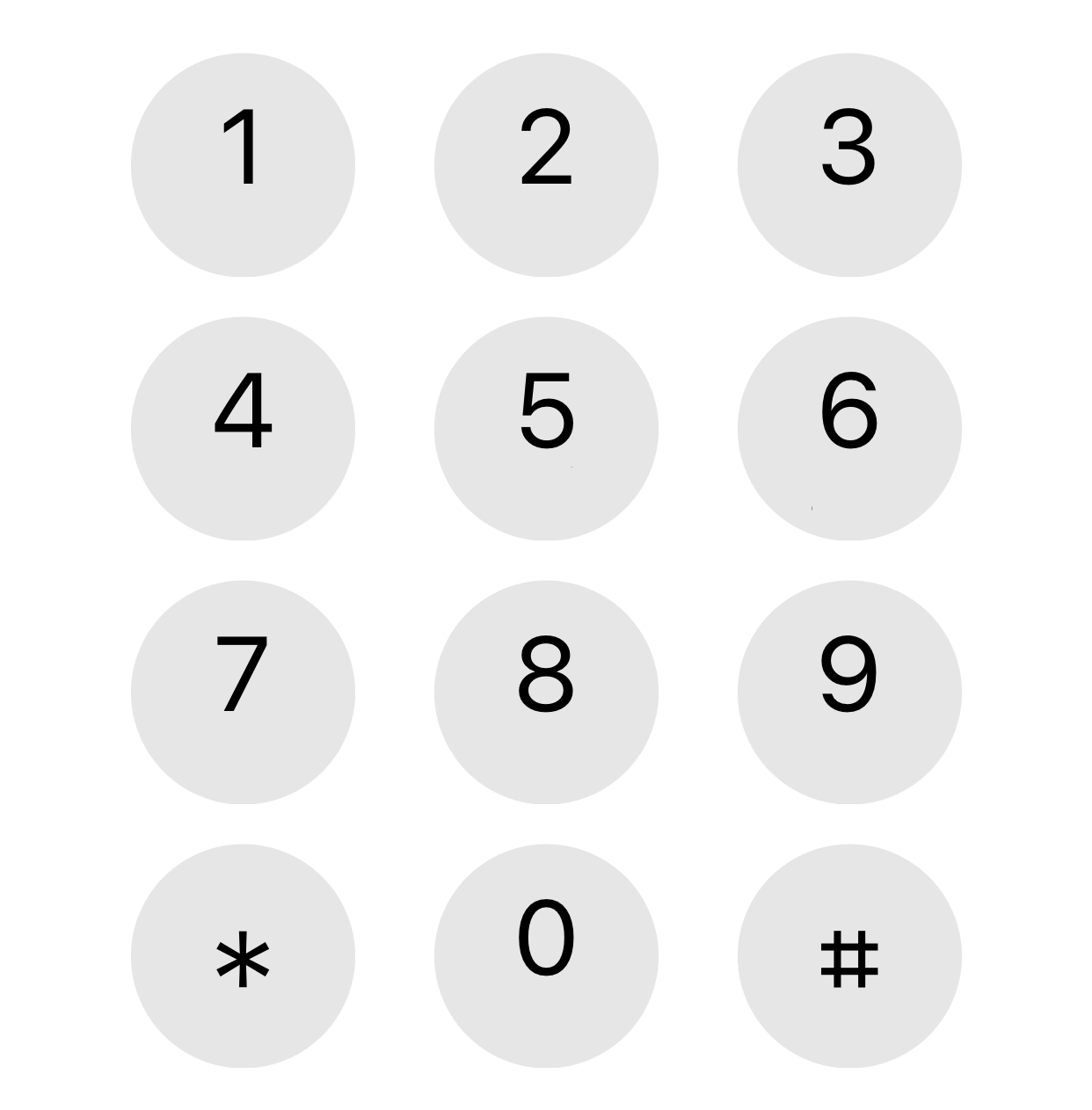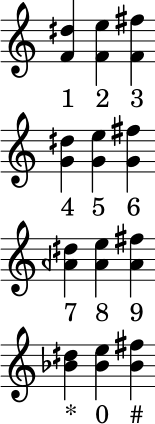Phone tones in musical notation
The sounds produced by a telephone keypad are a combination of two tones: one for the column and one for the row. This system is known as DTMF (dual tone multiple frequency).

I've long wondered what these tones would be in musical terms and I finally went to the effort to figure it out when I ran across DTMF in [1].
The three column frequencies are 1209, 1336, and 1477 Hz. These do not correspond exactly to standard musical pitches. The first frequency, 1209 Hz, is exactly between a D and a D#, two octaves above middle C. The second frequency, 1336 Hz, is 23 cents [2] higher than an E. The third frequency, 1477 Hz, lands on an F#.
In approximate musical notation, these pitches are two octaves above the ones written below.

Notice that the symbol in front of the D is a half sharp, one half of the symbol in front of the F.
Similarly, the four row frequencies, starting from the top, are 697, 770, 852, and 941 Hz. In musical terms, these notes are F, G (31 cents flat), A (54 cents flat), and B flat (16 cents sharp).

The backward flat symbol in front of the A is a half flat. As with the column frequencies, the row frequencies are two octaves higher than written.
These tones are deliberately not in traditional harmony because harmonic notes (in the musical sense) are harmonically related (in the Fourier analysis sense). The phone company wants tones that are easy to pull apart analytically.
Finally, here are the chords that correspond to each button on the phone keypad.

Update: Dial tone and busy signal
Related posts[1] Electric Circuits by Nilsson and Riedel, 10th edition, page 548.
[2] A cent is 1/100 of a semitone.